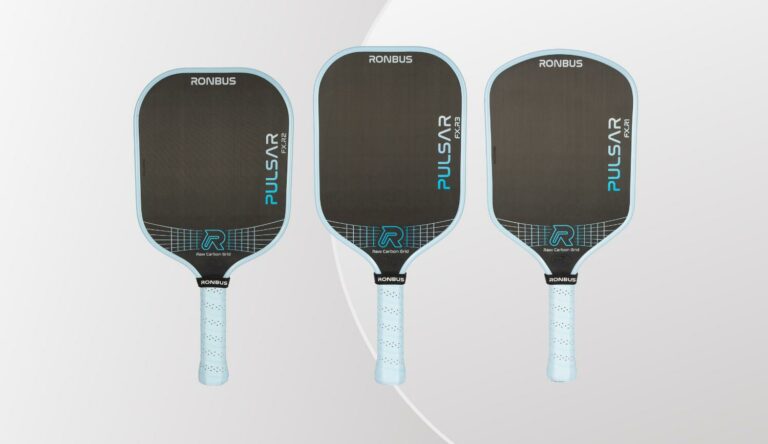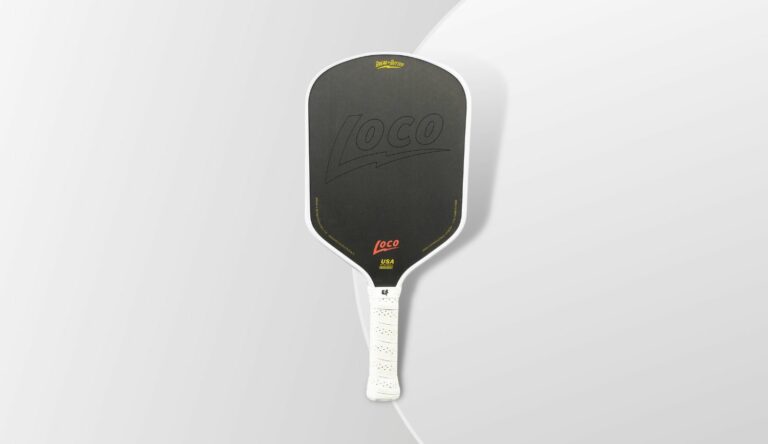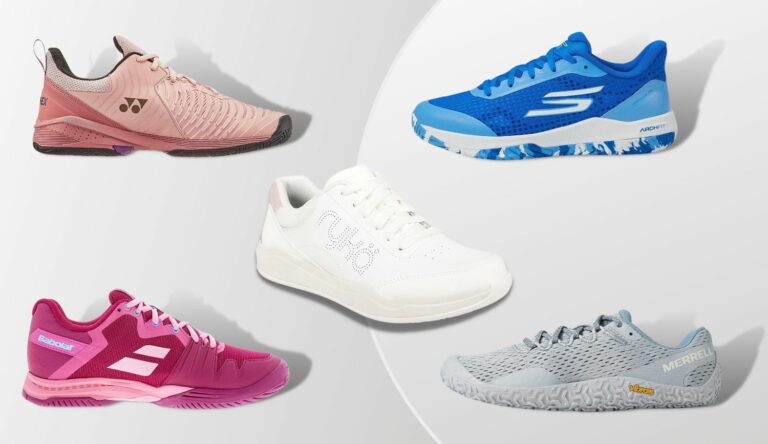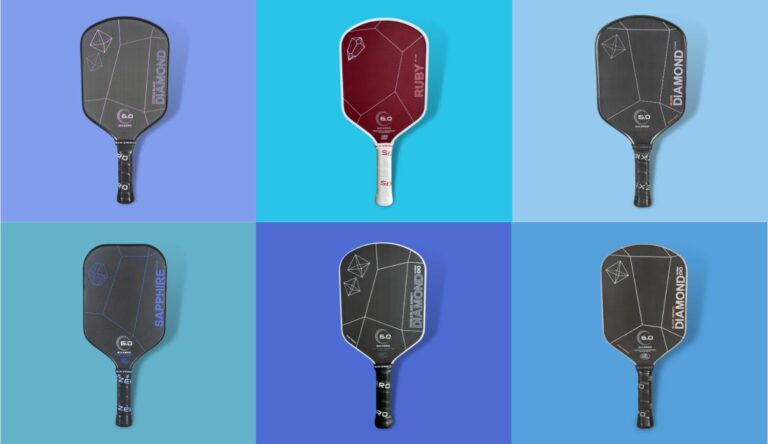Pickleball is exploding in popularity in part because it’s an accessible sport that’s easy for anyone to pick up and start playing.
While the sport is low impact relative to other competitive sports, injuries do happen in pickleball. Especially when so many new players are joining the ranks and playing their hearts out on a regular basis. The first injury I encountered was a back injury, prompting me to write a post about pickleball back injuries, which you can find here.
I’ve met a ton of people who fell in love with the sport right away and played ridiculous amounts of the game right out of the gate. Unsurprisingly, many of them have encountered health issues, namely sprains and strains.
In this post, we’re going to discuss those pesky knee injuries that can crop up during pickleball play. We’ll cover causes and advice on how to deal with the situation.
Contents
Is pickleball hard on your knees?
Pickleball may be marketed as a low-impact sport, but if you’re not at a high fitness level, the sport certainly can be unfriendly to the knees.
I know many players who’ve lived active lives and never experienced knee issues up until they started playing pickleball.
Knee injuries are serious, and a few of them ended up quitting because they waited too long to address their pain.
Here are a few aspects that tend to make pickleball tough on knees:
Lots of hard start-stop lateral movements. You move a lot in short bursts while playing pickleball, an example being rushing to and stopping at the kitchen line constantly. All of this hard forward/diagonal cutting, side shuffling, and abrupt stopping can stress and tear the knee’s meniscus.
- Extensive utilization of untrained muscle groups. Pickleball engages muscle groups that most people haven’t used much in their life unless they’ve played basketball or other racquet sports.
- Lots of bending and squatting. This puts pressure on the knee joints when supportive muscles are underdeveloped, such as glutes, hamstrings, and calves.
- Many new players don’t have extensive sports backgrounds. This leads to a variety of issues, such as improper warm-ups and cooldowns, overextension/overexertion, and poor physical mechanics.
- Many new players have previous sports injuries. Many new pickleball players do have a history with other sports such as tennis, volleyball, running, racquetball, etc, and they bring their old injuries with them. Diving head-first into this new, accessible sport feels fun and freeing, but old injuries, such as tendonitis, can crop up fast and lead to systemic injuries.
- Poor form/coaching. Many players don’t know how to use proper body positioning and overall form. This can put them in awkward positions at times that cause acute strain to their knees.
- Overplaying. I get it, the game is super fun. But far too many players ignore their bodies and push themselves too hard to get their fix. It’s a bad trend that often results in less playtime in the long run due to injuries.
What should you do if you experience knee pain from pickleball?
If you’ve only recently started playing the sport, it’s possible that your body simply isn’t used to the physical demands of pickleball and your pain is a result of going a bit too hard too soon.
If you think this might be the case and your pain is mild, consider easing into the game a bit slower. Play less often and employ some pre/post-workout stretching and lower-body strength training. You can use the tips later in this post or get a coach/trainer to work on your form and your physique.
If you have significant knee pain, it would be a good idea to temporarily stop playing and get a doctor’s diagnosis. There are a lot of potential issues, including medial and/or lateral meniscus tears. This type of injury requires rest and recovery.
An MRI will be able to diagnose this and other potential issues like ACL or MCL injury. I recommend getting an assessment from an orthopedist, sports medicine knee specialist, or physical therapist with a strong sports medicine background.
If they can pinpoint any core issues, you’ll hopefully be able to catch it in time and course correct, enabling you to play pain-free and avoid surgery in the future.
Even in mild cases, an ortho or physical therapist can let you know about tight muscles that are putting pressure on your knees. Thigh, hip, IT band, and psoas issues are common knee strainers that can be addressed with targeted stretching and foam rolling.
How to prevent pickleball-related knee pain
While knee injuries can no doubt devastate your pickleball hopes and dreams, there are actions you can take to severely limit your chances of being hindered by knee pain.
1. Stretch often
Upping your levels of flexibility and mobility is key for injury prevention. Tight muscles and poor flexibility are common issues that can lead to knee pain.
For me, having tight hamstrings was starting to give me some knee pain. And stretching them out consistently stopped the pain entirely.
It’s also good to stretch out your calves, hips, and ankles regularly.
One of the best stretching exercises I can recommend is a lateral kneeling hip thrust. This stretches muscles that engage with the knees, hip flexors, groin flexors, and ankles. It’s also good for the core, which is an important muscle group for pickleball.
It’s best to employ proper stretching into a short warm-up and a post-workout routine. This is a great time to use resistance bands.
2. Do exercises that strengthen knee-supporting muscles
To protect your knees, you want to do some strengthening in addition to stretching your muscle groups out.
Problems in your joints are typically directly related to weaknesses in other joints and muscle groups. For example, having weak ankles can lead you to develop knee issues, because stress that the ankle can’t handle is directed to the knee joint.
For knee health, it’s best to strengthen your glutes, quads, hips, hamstrings, calves, and ankles.
You can look up some exercises on YouTube to address these areas. Bulgarian split squats, tib raises clamshells, lunges, and glute bridges are great to start with. They all activate supporting muscles around your knees.
The Knees over Toes Guy on YouTube is a really good source for exercise ideas that will strengthen your legs to protect your knees. Squat University and E3 Rehab are also great channels.
3. Learn proper pickleball mechanics
Playing uncontrolled pickleball leads to more than just lost points, it can get you hurt.
Many players develop quirky habits that will slowly wear down on them physically.
I know a player whose left knee started getting super painful. I watched his game and noticed on his serve that he was twisting his whole upper body on his planted left leg. His knee was not liking this at all. We addressed and corrected his serve form, and his knee issue cleared up.
It’s important to get your lateral footwork patterns dialed in. And also your court positioning. For example, I recommend getting to the kitchen as much as you can both for strategic reasons and to minimize your lateral movements which can strain the knees.
You also want to make sure that you’re squatting at the net. This helps engage your leg muscles to support your body weight instead of putting it all on your knees. You also want to try to land on the balls of your feet when you rush to the net, as crashing forward onto your toes is rough on the knees.
There are a ton of other mechanical considerations, and I recommend getting some coaching or watching YouTube videos to get your game dialed in.
4. Get the right footwear
Getting the right shoewear can make a huge difference in how your knees feel out on the court. If you don’t have court shoes, I highly recommend them.
They can help dampen vibrations in the knee, reduce overpronation, and ensure that your foot strike isn’t messing with you.
Fit is important, too. You don’t want to be sliding around in your shoes, as you can end up compensating, which may cause knee pain, shin splints, and foot pain. A lot of people double-sock, which can help with fit and prevent friction.
So ditch the cheap running shoes if you have them, and pick up some proper tennis/court shoes. And remember to replace them every 4-6 months, as worn-down shoes can also wreck knee health.
5. Consider insoles/orthotics
Same as shoes, getting good insoles can support your knees. There are some great over-the-counter insoles like Superfeet and move gameday pros, which are low-profile but supportive.
Custom-made orthotics from a good prosthetist/orthotics maker that specializes in sports are next level and can be a total game changer.
6. Utilize knee braces/compression sleeves
An obvious choice, proper compression sleeves tend to help knee issues. I recommend Incrediwear knee braces. I wear them consistently and really enjoy them.
While helpful, I caution against relying solely on a knee brace/sleeve. I see many players that try to slap a brace on as a simple fix without correcting underlying issues, and it rarely works out for them.
You also might not want to wear knee support every time you play. You need to build muscle to support your knees.
7. Do regular Massage/foam rolling
If you use a foam roller and roll your inner thighs, quads, and calves for 10 or so minutes a day you’ll undoubtedly relieve some of your knee pain.
Percussion guns are also stellar supports. I use my Bob & Brad D6 all over my body, including my knees and IT band. It’s made a huge difference for me in recovery and overall wellness.
8. Get your diet & supplementation dialed in
It’s becoming increasingly apparent that our diets affect our joint health. Eating low-inflammatory meals and taking supplements like collagen and glucosamine can go a long way to internally addressing knee and other joint pain.
9. Recover adequately (i.e don’t play too much)
Yes, I’m talking to you. I know you love pickleball and I know you dread the idea of skipping those awesome drop-in games at your local haunt.
But you need to give your knees time to recover after they get stressed. If they’re telling you they’re in pain, but you continue to play on them every day, you’re going to overwork them and make things far worse.
Be willing to slow down and admit to yourself when you’re overdoing it. Take a week off. Give it time to heal. Keep your playtime to an hour or two.
Hard surfaces are just murder for your knees and ankles when they’re under duress. If you feel pain, it’s time to stop and recover.
Closing thoughts
Hopefully, this post has helped you. Remember that knee damage is not something to overlook. You need to properly address chronic knee pain that doesn’t clear up with quick rest.
If you don’t, you might damage your knees badly enough that you’ll never be able to play again. Don’t be that guy/gal!
Keep Reading:
- Beginner Pickleball Tips
- Intermediate Pickleball Tips
- Essential Pickleball Rules Every Player Needs to Know
- Your Guide to the Pickleball Kitchen (Non-Volley zone)
- The 8 Best Pickleball Paddles for $100 or Less in 2023, Ranked
- The 5 Best Pickleball Paddles for Intermediate Players (3.5 – 4.0)






